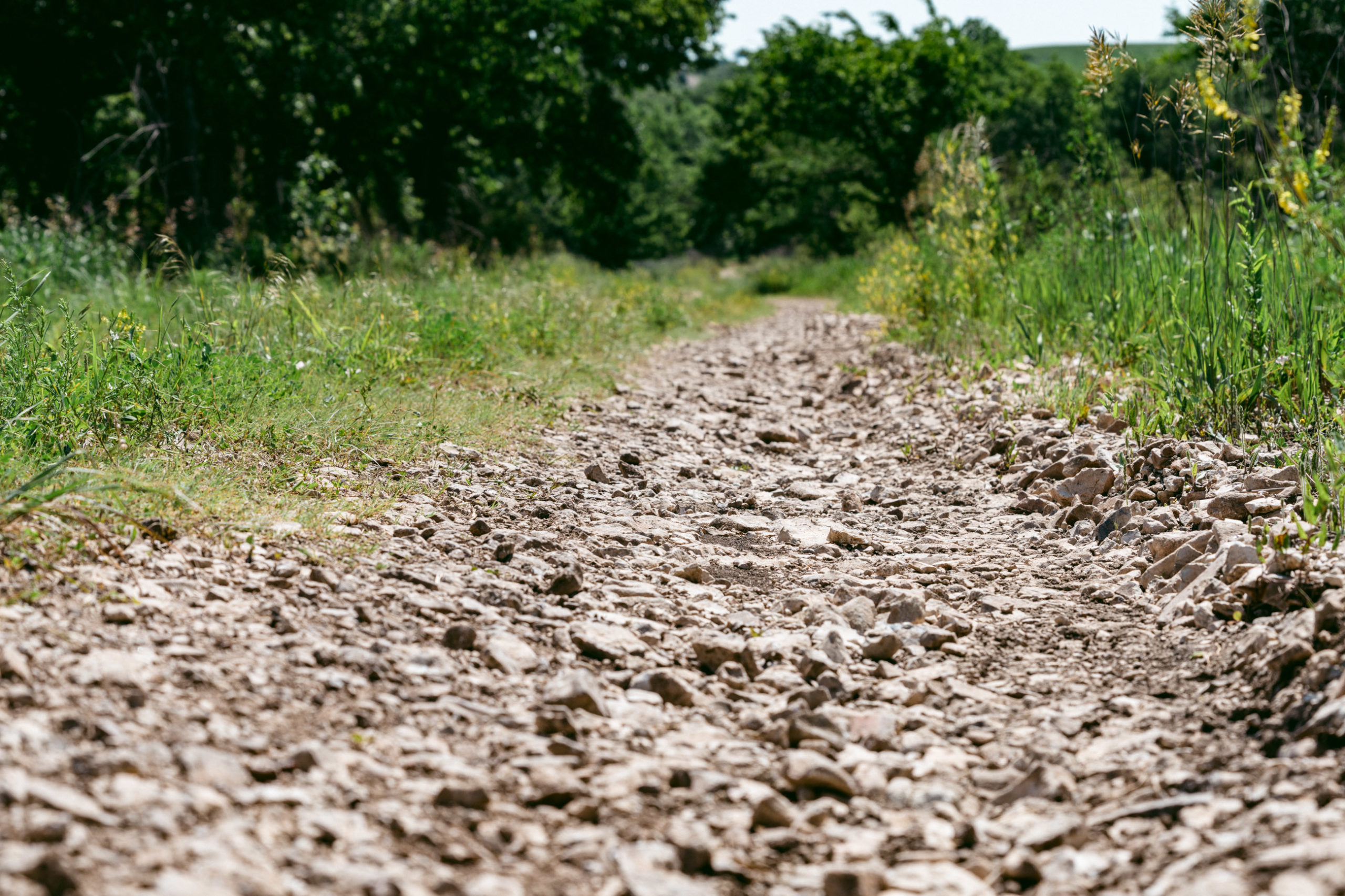When corporate priorities eclipse athlete safety, everyone loses
Klara Sofie Skovgaard lay broken in a roadside ditch for 90 minutes while helicopters flew overhead, capturing perfect footage for Life Time’s global broadcast. Her helmet had split on impact. Her shoulder was shattered, her knee torn open. As hypothermia set in and shock took hold, she watched those same camera helicopters pass by—close enough to film her suffering, too distant to offer help.
This wasn’t an accident. This was an organizational failure of staggering proportions, one that Life Time (and apparently the American cycling press) still refuses to acknowledge. The only coverage I have seen thus far has been from the British publication Cycling Weekly,
As cyclists, we’ve grown accustomed to celebrating the grit and self-reliance that defines gravel racing. We romanticize the remote courses, the technical challenges, the “figure it out yourself” mentality that separates gravel from road racing’s pampered pelotons. But somewhere along the way, event organizers began conflating authentic challenge with willful negligence. What happened to Skovgaard at the 2025 UNBOUND Gravel strips away that romantic veneer and exposes an uncomfortable truth: when billion-dollar corporations prioritize spectacle over safety, athletes pay the price in blood.


The heroes of this story aren’t wearing Life Time logos. Luise Valentin and Lucy Hempstead—both elite competitors with their own race ambitions—made a choice that Life Time’s organization couldn’t. They abandoned their competitions, sacrificed their results, and stayed with Skovgaard until medical help finally arrived nearly two hours after her crash.
Think about that for a moment. In Life Time’s premier event, with its multimillion-dollar production budget and global media presence, the difference between life and death came down to the compassion of fellow athletes, not the competence of event management.
“It should not be other riders’ responsibility,” Skovgaard later told Cycling Weekly, articulating what should be obvious to anyone running a major sporting event.
This year’s UNBOUND featured Life Time’s most ambitious live coverage yet. Helicopters tracked the leaders through Kansas’s Flint Hills. Camera motos captured every surge and attack. The world watched in real-time as drama unfolded on gravel roads. But as Skovgaard fought for consciousness in that ditch, those same production resources became a cruel irony. The infrastructure existed to document her suffering but not to address it. The technology was there to broadcast her pain but not to relieve it.
“It felt ironic looking up at a livestream media helicopter,” she reflected, a statement that should haunt every Life Time executive involved in this event.
Skovgaard’s ordeal wasn’t isolated. According to a report on Cyclingnews.com, the 2025 UNBOUND saw Sarah Sturm crash out with a concussion, Hannah Shell abandon after a crash on Divide Road, and Belgian rider Jelle Van Damme finish bloodied after tangling with barbed wire. The elite women’s field recorded 14 DNFs, most from crashes rather than mechanical failures or fitness limitations. This wasn’t bad luck. This was systemic failure masquerading as authentic gravel racing.
In the days following these incidents, Life Time’s response has been deafening in its absence. No press releases. No acknowledgments. No indication that they recognize the severity of what occurred, much less any commitment to preventing future occurrences. This silence isn’t oversight—it’s strategy. By refusing to acknowledge the problem, Life Time avoids accepting responsibility for it. But their calculated quiet only amplifies the message they’re actually sending: profit margins matter more than rider welfare.
Gravel racing will always carry inherent risks. Remote locations, challenging terrain, and unpredictable conditions are part of what draws us to this discipline. But there’s a fundamental difference between accepting the risks that make gravel racing authentic and tolerating the negligence that makes it dangerous. Riders sign up for mechanical failures, weather challenges, and the physical demands of racing on gravel. They don’t sign up to be abandoned when those challenges result in serious injury.
“Traveling across the world to race means accepting risks—but I never expected to feel unsafe. I truly hope the organizers work to improve emergency access,” Skovgaard posted on her social media, capturing the distinction that Life Time seems unable to grasp.
View this post on Instagram
UNBOUND Gravel markets itself as gravel racing’s premier event—the discipline’s equivalent to the Tour de France. If Life Time wants that comparison, they must accept the responsibilities that come with it. Professional cycling’s biggest events maintain comprehensive medical coverage not because they’re risk-averse, but because they understand that managing risk responsibly is what separates legitimate competition from reckless endangerment. The Tour de France doesn’t leave riders suffering in ditches while helicopters film overhead. If it did, the backlash would end careers and reshape the sport.
Life Time stands at a crossroads. They can acknowledge their failure, implement meaningful safety improvements, and demonstrate that they take their duty of care seriously. Or they can continue their silence, hoping this controversy fades while they plan next year’s broadcast package. The choice they make will define not just UNBOUND’s future, but the standard of care that athletes can expect from corporate-backed gravel events.
Because if Life Time won’t accept responsibility for keeping their athletes safe, who will?
As participants and fans of this sport, we have our own choice to make. We can accept Life Time’s silence as the price of premium gravel racing, or we can demand better. Skovgaard survived her ordeal, but that’s not the point. The point is that her survival depended on factors entirely outside Life Time’s control—the kindness of competitors, the resilience of her own body, and sheer chance. That’s not a business model. That’s not a safety protocol. That’s not acceptable.
The gravel racing community deserves events that challenge our bodies without abandoning our welfare. We deserve organizations that understand the difference between embracing risk and enabling negligence. Most importantly, we deserve better than silence when things go wrong.













Wow! Epic Fail by these organizers. It sort of confirms my initial impression about these guys. As a long-time journalist, media ops manager at a couple of cycling world championships, founding manager of Levi’s Gran Fondo, media chief at Sea Otter, Race Across America, etc. etc. etc. I find this story interesting and disturbing.
I’ve had close working relationships with several organizers of big bike events in the US, and I cannot think of one that would have left that rider lying, possibly dying, on the roadside. Thing is: You don’t know how bad it is, so if they aren’t getting up you get somebody out there ASAP. That’s just the way it’s done. The duty of care falls on the organizers, not the other athletes.
Who knows if Lifetime’s upper management even knows what the Golden Hour is? They probably think it’s the best times of day to get photos.
These guys at Lifetime, I met the top trio the year they bought Sea Otter. My acquaintance introduced me as the former media director of Sea Otter. That counted for nothing with this group. What did Musk say: There’s too much empathy in the world? Yah, that’s the vibe I got from them: Zero empathy. They seemed to me like the kind of wealthy frat boys you don’t want anything to do with.
Unlike many of my colleagues in the industry, I wanted nothing further to do with them at the time, and for me nothing has changed. I could understand my colleagues: these guys have money, and we all need paying jobs. For me, I was sad they were taking ownership of an event that for a few years I poured everything I had into, and I just didn’t like the way they smelled.
Footnote: Word to the wise – when something like this happens you have to get out in front of it and face the music, come out with something honest and truthful. If your account rings true (and it must be true, with necessary background but no excuses), and if there is something forgivable in your story, people will forgive you.
I cry foul on this article. Having ridden Unbound/DK a dozen times and ridden thousands of miles in the Flint Hills, people have zero clue how remote you are going to be. Sure, you watch the youtube videos, read the tales but what you don’t understand is sometimes, no cell reception. Roads with one was in and one way out. Thousands of competitors having to clear the way for an emergency vehicle.
This wasn’t a failure on behalf of race promoters, this is a failure of competitors getting in over their heads.
Let this be your education. Ride all the gravel you want in your home town. It is not comparable to Divide Road, Copps Station, Little Egypt. You will be remote. Emergency help is not close. If you go down, you will 100% rely on the kindness of someone you never met. In the gravel community, there will be someone to help.
Having known promoters of this race since Jim Cummins and Big Grin, nothing devastates them more than an injury or even the death of a cyclist which has happened in the past.
See you all next year in Emporia. OR June 29 in Alma Kansas for Rock Ridge Gravel where the promoter is absolute world class and the aid stations are an all night party.
Keep in mind that this rider is the Danish national champion, not just another one in 5000 riders. Also, in an event this size, there should be contingency plans in place for situations like this.
In an event that large, Life Time should have people on motos or ATVs with Sat phones or radios (CB/shortwave) sweeping the course in both directions looking for injured people. There should be ambulances and EMTs at the aid stations.
If she was only a few miles from an aid station, someone could have notified them and she likely could have been picked up more quickly. At the very least if EMTs were stationed at various spots on course, a marshall on an ATV could likely have gotten them to the crash site where the EMT could have started treatment (pain management, splinting, IV fluids, blanket) to make her comfortable and reduced her pain levels until they could get her back to the hospital.
“Call 911” is not an emergency plan at an event that big.
I read the editorial carefully and still have no idea what happened because nothing was researched nor explained. Did the organizers know this person was down and ignored her? Did other racers report her going down or stop to help?
This statement is bizarre: “The elite women’s field recorded 14 DNFs, most from crashes rather than mechanical failures or fitness limitations. This wasn’t bad luck. This was systemic failure masquerading as authentic gravel racing.” You’re blaming the organizers for riders crashing? All events need to provide medical support, but how a person performs is up to them – that’s the whole point of a race.
I raced in the 200 and saw a dozen Jeeps at intersections for rescue. Granted that is spread over 200 miles.
Communication is the key. No cell, no rescue. A jeep 10 miles away could take 45 min to reach someone. You have to take that into account before racing.
Comments are closed.